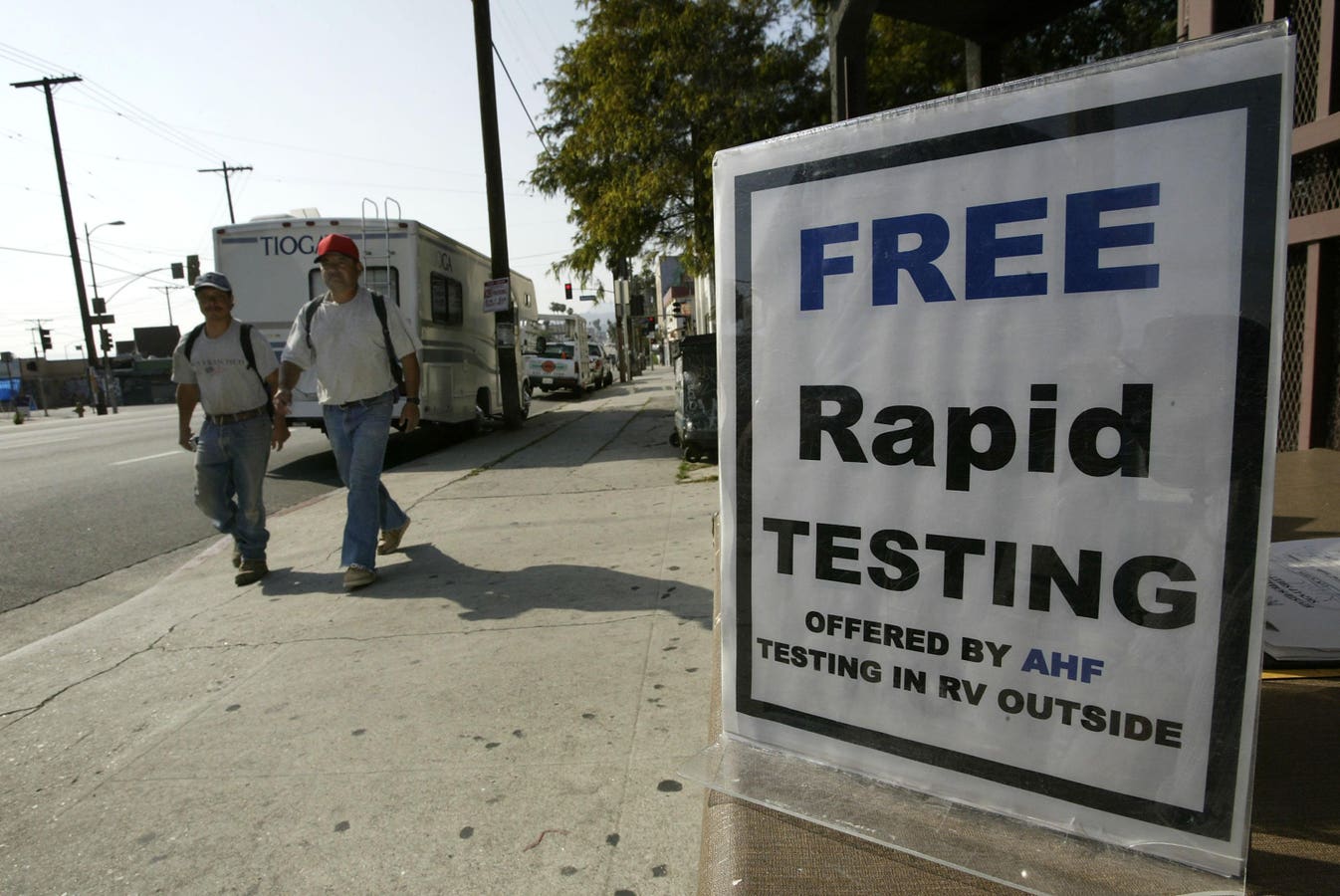LOS ANGELES – APRIL 28: A motorhome converted into a mobile HIV screening lab by the AIDS … More
Since June 27th, 1995, National HIV Testing Day has provided a platform to raise awareness and confront stereotypes about HIV. The theme for 2025’s Testing Day is “Level up your self-love: check your status.”
What is HIV?
HIV is the acronym for human immunodeficiency virus. The initial symptoms of HIV resemble many other illnesses: chills, fatigue, fever, swollen lymph nodes, etc. In fact, some people may not know that they are positive for HIV because they may not have noticed any unusual health symptoms. According to 2022 stats published by HIV.gov, around half the amount of polled young people, ages 13-24, did not know if they were positive for HIV. In the same poll, around 30% of adults, ages 25-34, reported that they also did not know their HIV health status. If a person has HIV but hasn’t been diagnosed, that person can unknowingly transmit the virus to others.
Many medical professionals recommend routine HIV tests, especially for patients who already undergo STI screenings. Routine HIV testing can help diagnose an infection as early as possible. This prompt detection can ensure that an HIV-positive person can receive medical treatments to prevent HIV from advancing into AIDS. A common misconception conflates HIV and AIDS, or acquired immunodeficiency syndrome. As HIV enters its advanced stages, it can result in worsening damage to a patient’s immune system. However, early diagnosis and antiretroviral (ARV) treatment can prevent HIV from developing into the more dangerous condition of AIDS.
There is no current cure for HIV; however, the CDC emphasizes that “people with HIV who get on and stay on effective HIV treatment can live long, healthy lives and protect their partners.”
HIV can only spread through bodily fluids like breast milk, blood, semen, rectal, and vaginal fluids. Unprotected sex is a common method of transmission for HIV. Men who have anal sex with other men have historically been identified as experiencing a higher risk of potentially coming into contact with HIV. However, a person’s sexual orientation is not innately a risk factor. Any person who experiences anal fissures or vaginal dryness might experience bleeding or minor tearing during unprotected sex. These damaged tissues can increase the risk of transmitting HIV because bodily fluids may come into contact with your mucus membrane.
While HIV is often transmitted through sexual contact, there are other ways that the virus can spread. Contaminated needles can expose people to HIV. Mothers with HIV may transmit the virus to their children through breastfeeding.
What Are Prevention and Testing Options?
You can lower your risk for HIV and other illnesses by taking the following actions:
– Use condoms and dental dams
– Use medical-grade, sterile needles
– Never share needles with other people, and never inject yourself with a needle someone else has already used
– Disposing of medical equipment safely to avoid accidental needle pricks
– Getting routinely tested for HIV
Condoms are an effective tool for preventing the transmission of HIV because condoms limit your exposure to bodily fluids. According to a study published in the Journal of Acquired Immune Deficiency Syndromes, condoms are between 70%-80% effective at preventing the spread of HIV.
If you worry that you may be at risk, you might consider a preventative treatment like Pre-Exposure Prophylaxis, or PrEP. For over ten years, PrEP has helped prevent patients from developing HIV.
If you are interested in testing options, consult with your doctor or your local health department. On National HIV Testing Day, many pharmacies (including participating Walgreens locations across America) offer free rapid HIV tests and other resources.









